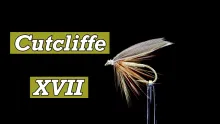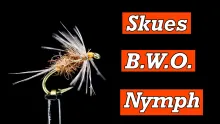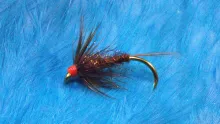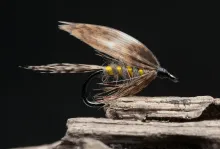This is a Roger Woolley pattern. He was a professional fly dresser from the UK who was a big fan of West Country or Devon style stiff hackle wet flies. HC Cutcliffe is perhaps the
most famous Devon angling author who published his work "The Art of Trout Fishing in Rapid Streams" in 1863. Dr. Paul Gaskell’s research and book about Cutcliffe brought him to see a collection of Cutcliffe flies tied by Woolley that are owned by John Shaner from perhaps 1930/40s. From these flies we can see that Woolley "doubled" the hackles but preferred to leave them tied in vertical rather than swept back and curled as Cutcliffe suggested as an "optional" part of the patterns.
Dr. Paul Gaskell made a few videos available on YouTube talking about this here: This is part 3. https://youtu.be/wh8X3CEuiGw
Woolley published the Exe Fly pattern in his book "Modern Fly Dressing" (1950) and titled it after the River Exe in Devon and listed it under the section for "Devon and West Country Flies".
Exe Fly recipe:
Hook: wet fly hook of your choice.
Thread: Primrose silk.
Body: 1/3 is silk bend end (rear): 2/3 pheasant tail head end (I said it backwards in the video and tied it more like 50/50- woops!).
Hackle: Furnace rooster. I presume based on Woolley's knowledge of Cutcliffe that he "doubled" the hackle per West Country techniques. But...having seen his versions of Cutcliffe flies I am guessing he left the hackle tips more vertical than fully swept back, divided and curled as Cutcliffe did on some of his flies. Have fun with this! You can not double and tie in like a dry fly and you can vary the amount of hackle going sparse or full as you prefer.
- Log in to post comments







